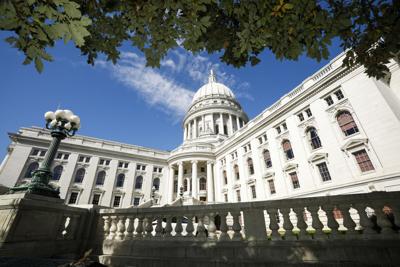The Legislature’s powerful Joint Finance Committee on Thursday unanimously approved a plan outlining how $31 million Wisconsin received from a multistate opioid lawsuit settlement will be used by the state.
The plan, approved by lawmakers on a 16-0 vote, comes after Republicans, who control the committee, rejected multiple versions of a proposal from the Department of Health Services on how to use the money. DHS started receiving funds from the settlement in July, but was unable to dole out the money without lawmakers’ approval.
Under the terms of a 2021 state law, 30% of settlement funds will go to the state and 70% will go to local governments.
“This is a good day for Wisconsin,” JFC co-chair Rep. Mark Born, R-Beaver Dam, told reporters before the committee met to vote on the plan, adding that GOP lawmakers “wanted to make sure (DHS) was working with the whole state, with stakeholders” before approving a plan for the funds.
The DHS plan — submitted after a series of listening sessions — included increasing the availability of the overdose treatment drug Narcan and fentanyl testing strips, funding new and updated treatment facilities, allocating money specifically to tribal nations and implementing educational programming in schools.
The GOP-authored plan maintained most elements of the plan submitted by the health department. In total, it changed how $5.75 million of the settlement money would be spent.
Included in the plan is:
$3 million to fund a program that provides Wisconsinites access to Narcan, which is used to treat opioid-related overdoses;
$2 million for the distribution of fentanyl testing strips;
$6 million for Wisconsin’s tribal nations;
$2 million for medication assisted treatment;
and $3 million for a grant program to help train law enforcement officials, among other things.
Attorney General Josh Kaul, a Democrat who had advocated for the DHS plan, said in a statement after the committee approved the plan that “millions of dollars that DOJ helped secure to fight the opioid epidemic can now start being used to make Wisconsinites safer.”
He added that it is “a positive development that these funds will be available to address the opioid crisis without further unnecessary delay.”
DHS director of opioid initiatives Paul Krupski said during a Wisconsin Health News event earlier this summer that 73% of Wisconsin’s opioid-related deaths involved synthetic opioids, primarily fentanyl. The prevalence of fentanyl has propelled Wisconsin into the “third wave” of its opioid epidemic, Marshfield Clinic Health System chief medical officer Dr. William Melms said at the same event.
An August 2021 DHS report found that suspected opioid overdoses increased significantly — even more than expected — since COVID-19 was first detected in Wisconsin in March 2020, creating a “dual public health crisis.”
Opioid overdose deaths in Wisconsin dropped by 10% to 839 in 2018, following a steady increase. Deaths increased again in 2019 to 916, and in 2020, the state recorded 1,227 opioid overdose deaths.
Since 2014, lawmakers have passed more than 30 bipartisan laws aimed at curbing opioid abuse in Wisconsin.
Capitol Bureau Chief Jessie Opoien contributed to this report.



